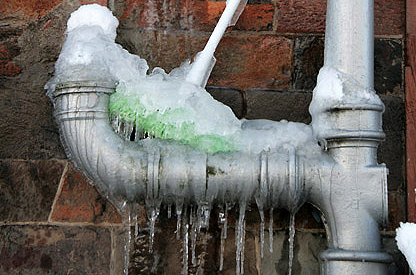Key Strategies for Preventing Frozen Pipes in Cold Weather
Key Strategies for Preventing Frozen Pipes in Cold Weather
Blog Article
This post in the next paragraphs relating to How to prepare your home plumbing for winter weather is pretty much interesting. Read it for yourself and decide what you think about it.

Winter can ruin your plumbing, particularly by freezing pipes. Here's how to stop it from happening and what to do if it does.
Intro
As temperatures decline, the risk of icy pipes boosts, potentially bring about expensive fixings and water damage. Recognizing how to avoid icy pipelines is important for home owners in chilly environments.
Avoidance Tips
Insulating vulnerable pipes
Wrap pipelines in insulation sleeves or use warm tape to safeguard them from freezing temperatures. Focus on pipelines in unheated or external locations of the home.
Home heating methods
Maintain indoor areas properly heated, specifically areas with pipes. Open up cabinet doors to enable cozy air to flow around pipelines under sinks.
Just how to identify icy pipes
Search for reduced water circulation from taps, uncommon smells or sounds from pipes, and visible frost on subjected pipes.
Long-Term Solutions
Structural modifications
Think about rerouting pipelines away from exterior walls or unheated locations. Include extra insulation to attics, cellars, and crawl spaces.
Updating insulation
Purchase top notch insulation for pipes, attics, and wall surfaces. Appropriate insulation helps maintain regular temperature levels and lowers the threat of frozen pipelines.
Securing Exterior Plumbing
Yard hoses and outside taps
Separate and drain garden pipes prior to wintertime. Install frost-proof faucets or cover outside faucets with protected caps.
Recognizing Frozen Pipes
What causes pipelines to ice up?
Pipelines ice up when exposed to temperatures listed below 32 ° F (0 ° C) for extended durations. As water inside the pipelines ices up, it broadens, taxing the pipe walls and possibly creating them to burst.
Risks and problems
Icy pipelines can result in water disruptions, building damages, and pricey repairs. Burst pipelines can flooding homes and trigger comprehensive structural damage.
Indicators of Frozen Piping
Recognizing icy pipes early can prevent them from breaking.
What to Do If Your Pipes Freeze
Immediate actions to take
If you believe icy pipes, maintain faucets open to soothe stress as the ice melts. Make use of a hairdryer or towels soaked in warm water to thaw pipes gradually.
Conclusion
Protecting against frozen pipelines requires aggressive steps and fast responses. By comprehending the reasons, indicators, and preventive measures, home owners can protect their pipes throughout cold weather.
5 Ways to Prevent Frozen Pipes
Drain Outdoor Faucets and Disconnect Hoses
First, close the shut-off valve that controls the flow of water in the pipe to your outdoor faucet. Then, head outside to disconnect and drain your hose and open the outdoor faucet to allow the water to completely drain out of the line. Turn off the faucet when done. Finally, head back to the shut-off valve and drain the remaining water inside the pipe into a bucket or container. Additionally, if you have a home irrigation system, you should consider hiring an expert to clear the system of water each year.
Insulate Pipes
One of the best and most cost-effective methods for preventing frozen water pipes is to wrap your pipes with insulation. This is especially important for areas in your home that aren’t exposed to heat, such as an attic. We suggest using foam sleeves, which can typically be found at your local hardware store.
Keep Heat Running at 65
Your pipes are located inside your walls, and the temperature there is much colder than the rest of the house. To prevent your pipes from freezing, The Insurance Information Institute suggests that you keep your home heated to at least 65 degrees, even when traveling. You may want to invest in smart devices that can keep an eye on the temperature in your home while you’re away.
Leave Water Dripping
Moving water — even a small trickle — can prevent ice from forming inside your pipes. When freezing temps are imminent, start a drip of water from all faucets that serve exposed pipes. Leaving a few faucets running will also help relieve pressure inside the pipes and help prevent a rupture if the water inside freezes.
Open Cupboard Doors
Warm your kitchen and bathroom pipes by opening cupboards and vanities. You should also leave your interior doors ajar to help warm air circulate evenly throughout your home.

We hope you enjoyed reading our part on Winter Plumbing Precautions: Preventing Frozen Pipes. Thanks a ton for taking a few minutes to read our posting. Remember to take the opportunity to promote this page if you enjoyed it. We appreciate your readership.
Course Detail Report this page